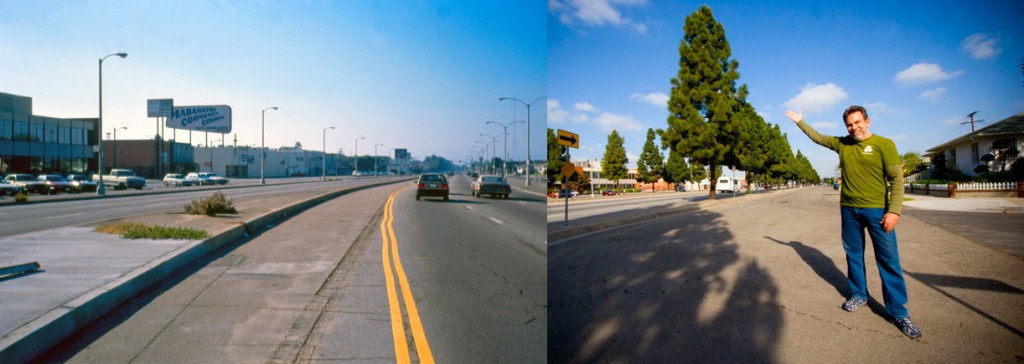On January 15, 1990, three thousand people came out to honor Dr. Martin Luther King, Jr. by planting 400 trees along the entire length of MLK Boulevard in South Los Angeles–seven miles in a single day. At this event, organized by TreePeople, each tree was named in memory of someone, and then adopted by a neighboring resident committed to its ongoing care. The result is the largest living monument to Dr. King in existence.
The idea for this monument came from a TreePeople Citizen Forester named Eudora Russell, who for years had dreamed of turning the barren stretch of King Boulevard into a fitting memorial to its namesake. Eudora petitioned the city with the proposal but she got no response, so she came to TreePeople. We chose Canary Island pines for their resilience, their tolerance of smog and fire, echoing the resilience of the Dream. More than 20 years later, the trees are thriving and beautiful, a monument to one of Dr. King’s key tenets: sustained community engagement and action.
Citizen forestry is about building relationships within neighborhoods and reknitting the fabric of our communities. Yes, planting trees is a part of it, but it’s never just about planting trees. The goal is to re-establish connections. Too often with large-scale programs, the point becomes about the number of trees in the ground, or the disposal of trees altogether. Trying to achieve a numeric goal does not produce satisfaction, and does not produce goodness in the community.
I like to say that it takes five years to plant a tree. To plant trees on King Boulevard actually took much longer. Aside from walking from door to door for months before the planting to enroll every willing neighbor and community organization, the long-term follow-up was even more important. Every month for 10 years TreePeople staff came out with trucks, tools, and supplies, and neighborhood volunteers came out in support. Together we watered and weeded and tended to the hundreds of Canary Island Pines.
With some trees now as tall as 40 feet, the King Boulevard living monument can even be seen from outer space. And–speaking of space–when the Space Shuttle Endeavour prepared to roll through South L.A. in October 2012, alarmed community members who attended public forums organized by the California Science Center (CSC) alerted TreePeople to a rumored clear-cutting of these mature pines. Fearing the worst possible fate, I set up an emergency meeting with museum officials with the goal of protecting all the trees. They clarified that only 14 of the legacy trees were scheduled for removal, but I argued that none of them should be touched. I emphasized the extent of community ownership and physical and emotional investment embodied by these specific trees. The CSC took this to heart and the Endeavour route was substantially altered–and slowed–so that the MLK memorial trees would be safe.
This depth of engagement is why these trees are alive. The CSC agreed to a very generous package of mitigations. Instead of two small trees for every one cut, they have committed to providing four very large new trees to replace each tree cut. Instead of two years, they will fund five years of maintenance and devote half of the funding to train and employ local youths in the tree care. They are also providing a host of other benefits, including environmental educator training and sidewalk repairs.
If you want to feel inspired, visit these trees in person over MLK’s birthday weekend or take a virtual drive down the boulevard. And consider honoring him on January 19, the National Day of Service, by volunteering with TreePeople to help prep and distribute fruit trees in South L.A. Or, on January 21, join Citizen Arborist Latiffe Amado for tree care in Highland Park. What great ways to celebrate the life and achievements of Martin Luther King, Jr.: working together toward a healthier, safer, more sustainable city.

